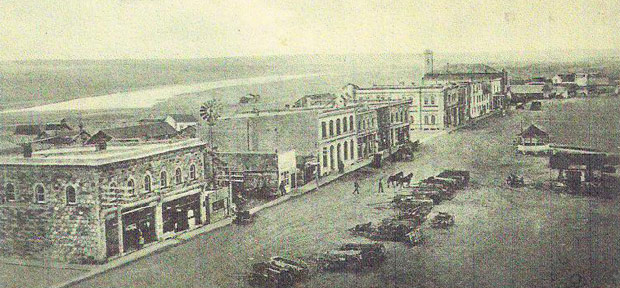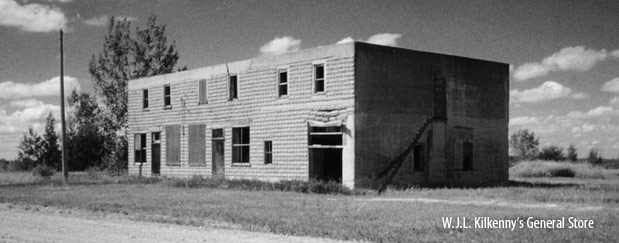





The Stories Behind the Art
TinHouse Designs refurbishes and frames each piece of ceiling tin as a representation of late-1800’s interior design. It depicts the simplicity of the art and metalwork of the era. The compliment of time makes each an authentic signature with its uniqueness and can make an exceptional addition to any home.
Not only does each piece have its own characteristics, there is also an interesting history behind it. TinHouse Designs researches the story of each building and then shares that story with you. Each piece of artwork has a chronicle of its originating building on the back along with Tyler Kilkenny’s signature and limited edition number.
The distinct pieces are a great addition to a home based on stylish looks and a connection to history. Art from TinHouse Designs is elegant and tasteful; and the story behind it guarantees you an interesting conversation piece.
Exploring TinHouse Stories
Each city has its own tale to tell. Click on the links below to discover the stories behind the tin.
Edmonton, AB Click to view
This tin is from the Jasper Block, located along Jasper Avenue in downtown Edmonton. The building is significant for being one of the last remaining turn of the century building left along Jasper Avenue. The traditional high glazed store fronts are typical of many early Edmonton Edwardian era developments.
Designed by architects Hopkins and Wright, the development was financed by John Kelly. He is best known as one of Edmonton's early businessman who began his career as a blacksmith but eventually expanded in real estate and commercial development. A few of his contributions still remain in Edmonton as significant resources in the city.
Wetaskiwin, AB Click to view
Some of Alberta’s most interesting history started within the walls of the building this tin comes from. The Reynolds-Alberta Museum in Wetaskiwin, AB is a well-known destination for automotive and history buffs. Stan Reynolds credits his passion for automotives to his father, Ted Reynolds. Ted bought the building on Wetaskiwin's main street in the 1940s and converted it from an electric lighting store to a service garage. Stan helped his father after school repairing cars and airplanes including a 1905 Oldsmobile and a 1918 Curtis Canuck biplane, which can both be found in the Reynolds-Alberta Museum today. This tin is believed to be over 100 years old, and was used on the ceiling of Ted's office.
Wetaskiwin is a thriving community that remembers its roots. The community has restored many of its beautiful old storefronts along the main street to their original design, and the area has many antique stores and dealers. The town is 72 kilometers south of Edmonton and is home to the Reynolds-Alberta Museum and the Aviation Hall of Fame.
Battleford, SK Click to view
Battlefords grew at the junction of the Battle River and the North Saskatchewan River, which both flow across Alberta from the Rocky Mountains. The aboriginal population recognized "Fighting River" as the boundary between Blackfoot and Cree Territory. The area is well known for its strong aboriginal culture with the area's museums holding over 6,000 years of aboriginal history. White man arrived to the area in the late 1700s, and a fur trading post was established in 1785. Over 100 years later in 1876, the North West Mounted Police established a headquarters there, and it became the capital of the North West Territories in 1877. The small city of North Battleford, found along the west Saskatchewan border was first incorporated as a village in 1906 but became a city in seven short years speaking to the area's growth and prosperity. This tin was found in the Harry Chow restaurant along Main Street.
Wapella, SK Click to view
Founded in 1882, the community of Wapella was typical of Saskatchewan's early agriculture communities. It thrived as settlers from Scotland, England and eventually 50 Jewish families from southern Russian settled homesteads in the area. The first post office opened in 1884 and a school soon followed along with four general stores, six elevators, a flourmill and three hotels.
While agriculture continues to be a major player in the area today, it was not enough to sustain the community and a whole block of historic buildings were knocked down in the mid-1990's. This is where this tin was rescued. However, the outlook for the town of Wapella is looking up. In 1952, oil was discovered and today, the community near the Saskatchewan-Manitoba border is active with many young families and strong community spirit.

Brandon, MB Click to view
Brandon's main commercial thoroughfare was hitting a boom by the turn of the century, and that included the construction of a flour mill on Pacific Street. In fact, Brandon grew so rapidly that it never attained the status of village or town, but instead was declared a city on May 20th, 1882. The looming four-story building over looked the Assiniboine River in the city's downtown and was just around the corner from Rosser Avenue, which is still lined with some of the finest architectural structures in Western Canada. As time wore on, the building was eventually used as Kulberg's furniture warehouse before being deserted. In 2005, the building was disassembled and the lumber was sold.
This tin was recovered from the back of the building where the main offices of the flour mill were found.
Broomhill, MB Click to view
W.J.L Kilkenny's General Store was the center of Broomhill, Manitoba. People traveled to his establishment every week to get mail, restock their cupboards and socialize with neighbours and friends. This tin was recovered from the walls and ceilings of the building; it consisted of his store, a dance hall, an implement dealership and a post office.
Broomhill suffered a fate similar to other small farming communities in the prairies, and all that remains is the decaying buildings. Homesteads dotted the surrounding area, which were filled with settlers that supported families with the hard work and hard times of farming. The community’s remains can be found near the Town of Melita, west of the City of Brandon in the extreme southwestern part of Manitoba.

High Bluff, MB Click to view
Along the Assiniboine River in Manitoba, there are small communities scattered about 7 miles apart. If one stops to wonder how and where the prairie settlers decided to put down the roots, they need only to think of the Red River Carts. The ox drawn buggies could only travel about that distance during the sunlight hours, and as they stopped each evening, people decided to leave the wagon train for a sick animal, a broken heart or a love for the countryside.
This tin comes from one such community. The High Bluff's store was the longest running general store in Manitoba when it closed up shop in 2001. Built in the late 1800's, the store saw many well known Manitobans come through it's doors.
Three provincial premiers called High Bluff home: Hon. J. Norquay, Hon. D.L. Cambell and Hon. W.C. Weir.
Lenore, MB Click to view
Lenore, Manitoba was the end of the line in 1901, so to speak. The community was built at the end of the Canadian Pacific Rail branch line because in 1901, the Assiniboine River Valley was too formidable of an obstacle to allow for development much further west. The community grew to about 300 people and served the surrounding farms with two lumber yards, two blacksmith shops, five implement dealers, a garage, two harness shops, a bank, stock shipping yard, grocery, hotel and of course, the Lenore Hardware store.
The store was built in 1902 and went through several owners through the years, but it served its final customer in July 2010. The community has suffered the fate of many small rural towns losing its school in 1979 and grain elevator in 1980 and now has a population of about 30 people.
Leonard, MB Click to view
Russell, MB Click to view
In the late 1870's Manitoba was officially opened to homesteaders by the Federal Government. Although the railway hadn't made it as far west of what is now the community of Russell. Manitoba, that didn't stop the settlers from traveling the Dawson trail by ox cart to stake their claim near the proposed railway line. A few immigrants from the British Isles developing a small community near what is now the Manitoba-Saskatchewan Border.
As was common during the time, this tin was used on the ceiling of a home built in 1904. Tin on the ceilings of homes was a sign of class. As time wore on, it was eventually covered and the current owners didn't realize it was hidden until a fire destroyed the home. The Blaze unearthed the antique treasure and resulted in the beautiful kaleidoscope of colors that can be found on the art today.
Winnipeg, MB Click to view
From a variety of buildings in Winnipeg's historic Exchange District, this tin saw some very important economic undertakings as the city was the gateway to Canada's West. Named after the many stock and commodity exchanges it housed during the late 1800's and early 1900's. This twenty block area was the hub of commercial activity, which included grain and wholesale trade, finance and manufacturing.
On September 27th, 1997, the Federal Minister of Canadian Heritage declared Winnipeg's core a National Historic Site due to its well-preserved collection of turn-of-the-last-century warehouse and commercial buildings. It now is home to chic boutiques and other trendy shopping.
Pelham, ONT Click to view
In a home older then Canada itself, this tin was found in the community of Pelham, Ontario. The two-storey, colonial-style circa 1840's house is framed by a beautiful veranda. Historical pictures show huge gardens enveloping a perfect path to the front door. History has passed this home many times as it is nestled in the heart of the Niagara Region.
Situated between Lake Ontario and Lake Erie, many travelers over the years have likely noted the grand home. Nearby, you can find the fertile vineyards and fruit orchards of Fonthill Kame, a giant hill composed of sand and gravel deposited by the retreating glaciers of the last ice age. And on a clear day, one can see the tall buildings of Niagara Falls to the East and Toronto to the North symbolizing the historic architecture withstanding the test of time.

